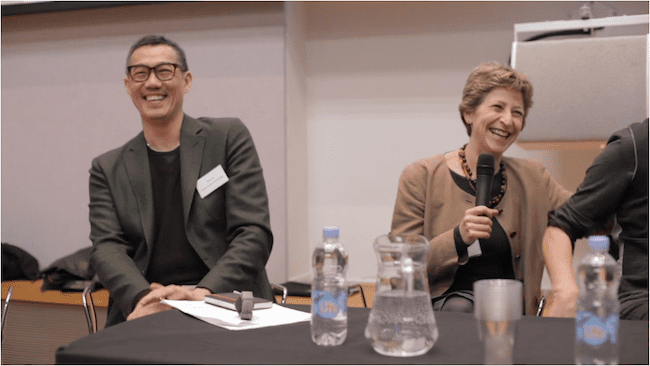This video comes to us from the Centre for Fine Print Research at the University of West England, Bristol. The CFRP’s research focuses on production of physical artifacts, primarily in print. All aspects of technology that relate to the core philosophy of making are central to its mission.
The video is a question-and-answer session dealing with a process which combines digital print technology with underglaze techniques from the 18th century. Here, the panelists tackle the creative and industrial considerations which arise from that.
From the video’s description:
Underglaze tissue ceramic transfer printing was first developed in the mid 18th Century and involved the use of engraved or etched metal plates, from which the tissue was printed with a cobalt blue or manganese ceramic ink (an oxide with a printing vehicle) the famous ‘Willow Pattern’ being perhaps the best known example. Underglaze tissue has a very distinctive, subtle quality, due to the oxide blending with the glaze. It is an integral part of English ceramic history, which cannot be replicated by any other means. The process lost favour because it was slow and required skilled artisans to apply the transfers. This 18th Century process continued to be used in the UK ceramics industry up until the 1980s.
However from the 1950s it began to be replaced, first by lithography, then by screen-printing. Screen-print remains the most common printed decorative technique for complex shapes, supplemented by Pad printing for hollow ware. Screenprinting is cheaper, quicker, multi-coloured and photographic imagery can be printed. However because it is on-glaze (on the glaze itself) it will wear and fade in a dishwasher and has none of the subtleties and delicate qualities of underglaze. Underglaze is far more permanent because it is being literally under the glaze. Pad printing (both onglaze and underglaze) is very quick and produces a very similar result to screenprint, however it can only be used on flat and gentle concave surfaces. Technological change is never an even process and a few companies continued to hold onto the original tissue process, Spode alongside Burgess and Leigh (Burleigh) were the last tissue printers to continue the process into the 21st Century.
Above image: Panelists from the CFRP’s discussion.
Any thoughts about this post? Share yours in the comment box below.

Spode also originated he bumper printing process. I was there when Guy Murray, came to see my father Ted Hewitt then MD of Spode, and asked if he had any work for him as he had just retired. My father took us to the museum, and showed Murray some items of bat printed china. He explained how the process worked and told Murray that printing would be revolutionized if bat printing could be done mechanically. Murray came back some three weeks later with a wooden prototype. which later was passed to Service Engineers. Ink was a difficult process as paper printing was done off a hot plate while the new process had to be done cold. Spencer Copeland found a fellow scientist who took almost a year of experimentation to finalise a cold printing ink with the help of Ian Forse, then works manager